Mural art depicts the activities of people of a particular civilization. It encompasses a moment in time. Events that happened at different times or in different time periods. Memories of that time. The lifestyle and religious and entertainment scenes of that time are shown. It can be said to be a combination of various artistic styles, dramatic sense of realism and amazing depth. In the Stone Age, people used to carve some figures on the cave walls to follow their footsteps. Until today, the art of jumping on the walls of roads and large buildings has made a big leap.
This art gives us a glimpse of the cultural and social diversity of different times that cannot be seen without paying any price. The practice of using oil paint on canvas as wall paintings appeared in Europe in the 16th century. Such works were completed in the artist’s studio and then delivered to the destination and pasted on the walls there. It lacked the luster of both color and surface texture. Such pictures would spoil themselves in a short time.
Chandeshwari Temple is also known as Chas: Azima Deg, located at Banepa in Kavrepalanchok district. The picture of Chanda Bhairav on one wall of the temple also helps to clarify the historical aspect of the wall painting. Although there is no single data as to when the temple was built, the art of wall painting has been passed down from generation to generation, which started with the construction of the temple in the 17th century. Also, wall paintings older than Chandeshwari temple have been drawn in the caves of Upper Mustang for thousands of years.
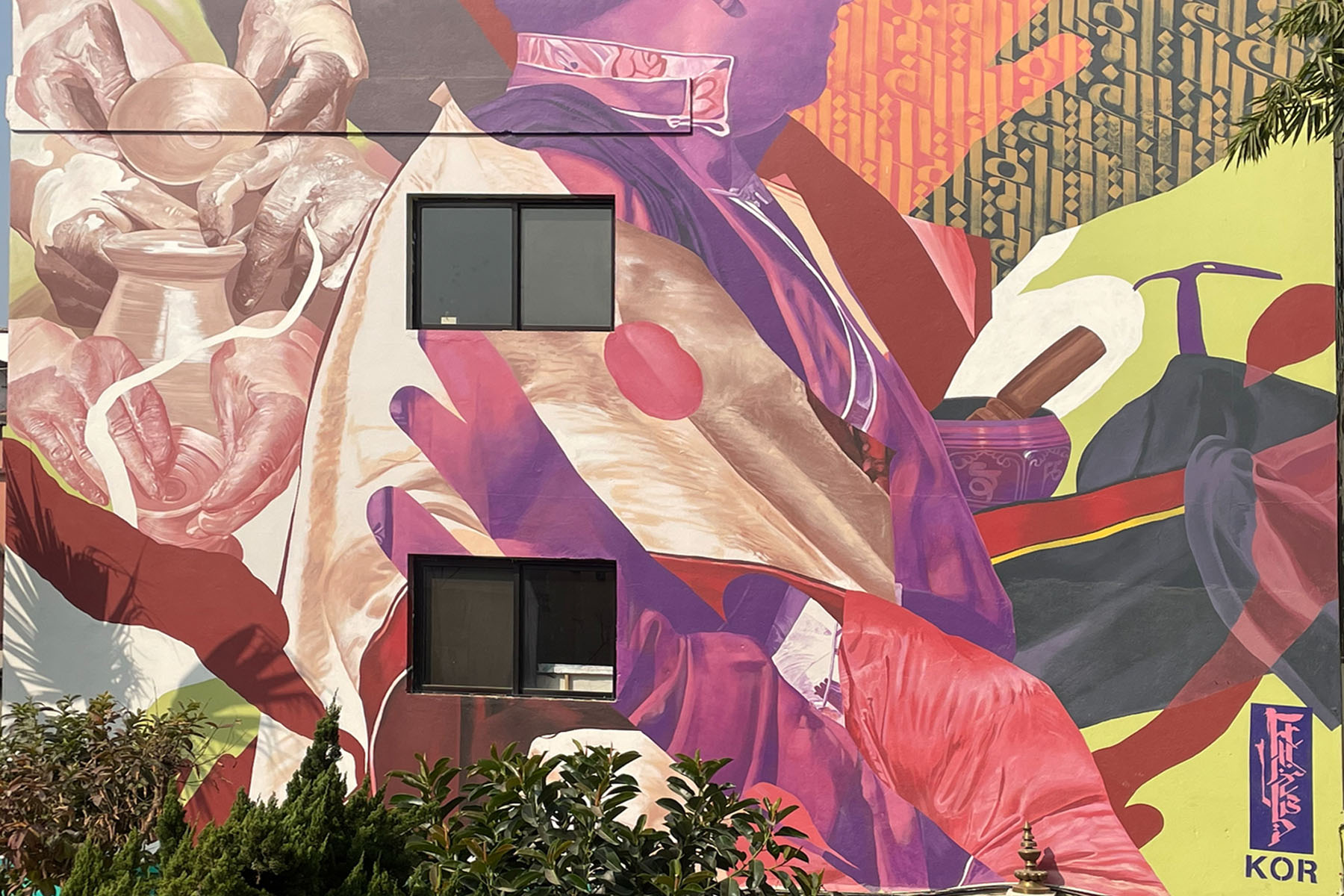
The mural with a long history has taken on different names until today. Such murals made in modern times are also used to tell history. A new art gallery is opening in Lazimpat, Kathmandu. A picture is being drawn on the outside of the building, which is a little inside from the main road. The picture which was created by artist Angchiring Sherpa is being painted on the wall by artist Bharat Rai. The trend of creating wall paintings is increasing in Kathmandu. “I felt like a canvas because the wall outside this gallery was white. We are going to do it thinking that it will be good to make something here.”- says artist Ang Tsherin Sherpa.
He further adds – the subject of human life cycle is tried here. Which is called ‘Wheel of Life’. But the Wheel of Life that is going to be made here is meant to be made in contemporary terms. The combination of colors is modern and the elements used are also modern.
Similarly, some time ago, Kathmandu Art House made a painting on one of its walls. Rajan Shakya, the director of ‘Mona’, says about that – ‘Mural painting is also a genre that carries the original ground of Nepal and has potential. That is why such pictures have been given permission on the wall of Kathmandu Guest House. This is an initiative, which will help to beautify the ugly concrete buildings standing in various places including Kathmandu and to observe the various dimensions and aspects of art.” And when the speed of development found a different way, a huge concrete jungle has already been established. But this concrete forest cannot give happiness to people, it cannot give peace to the eyes. Therefore, the walls of commercial buildings, hotels and restaurants and their walls can be presented in a very beautiful manner.
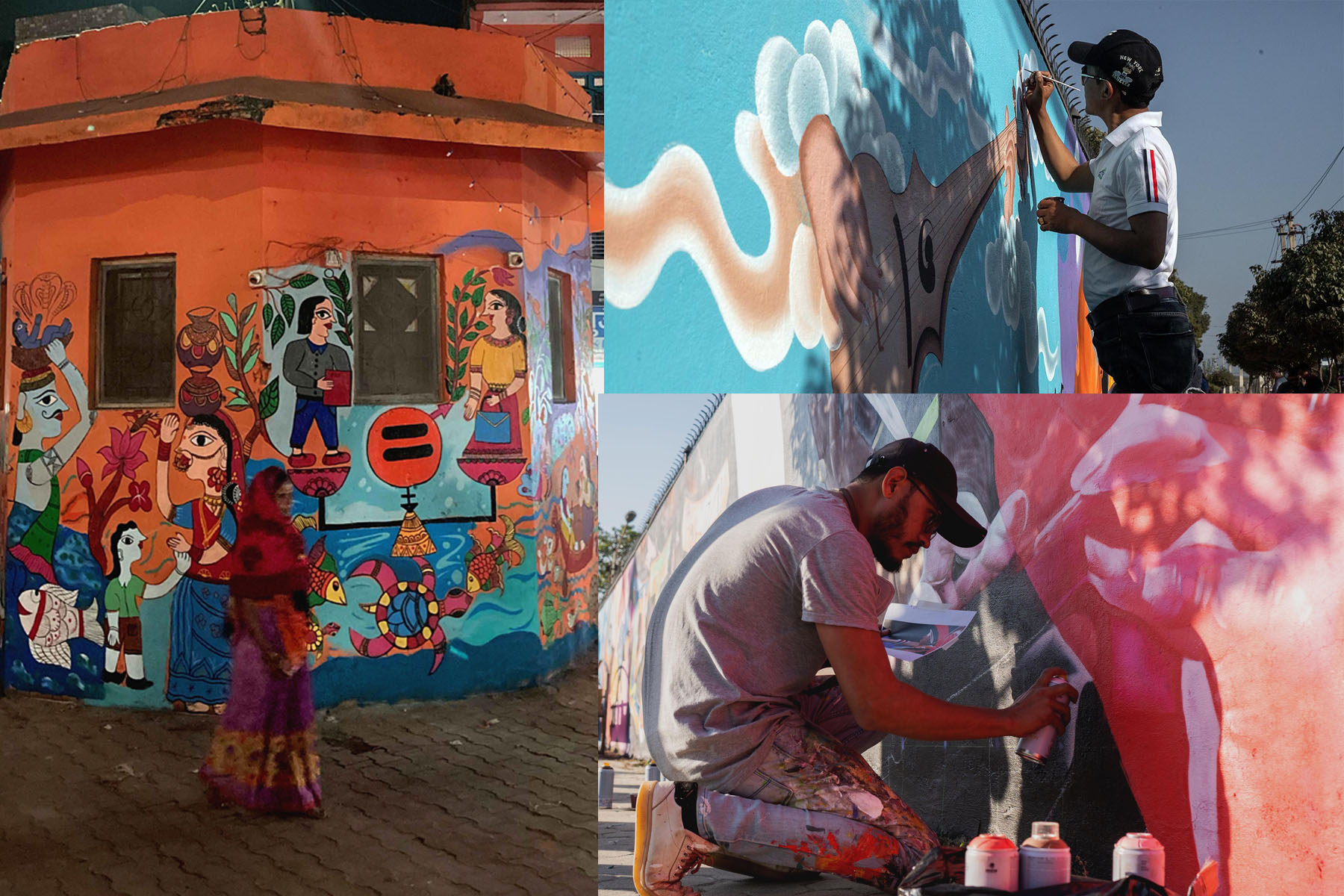
Shakya says that if any corporate house brands their company by doing such works in their buildings, then it will definitely help in the development of name, price and art. Also, if we follow the history of different types of murals than religious beliefs, in the 1940s, a mural named ‘Kilroy was here’ was made in America, in which a man with a long nose was shown hitting the top of the wall. The image became popular among American soldiers and later spread around the world. It is said to be the first example of street art being recognized globally.
The murals that are developing in this way have also made a place in Nepali society. When the leap of time reached the 21st century, such murals have started to find a place in the Nepalese society and also in the city market here. Kiran Maharjan, an artist who works without studying the meaning of his work, only works on it, most of the paintings he makes on the wall are focused on topics like anger, greed, jealousy, laziness and pride. His sprays have succeeded in painting not only the walls of the country but also the walls of foreign countries. Kiran and his group have already worked on the wall of the Art House building on the west side of Kathmandu Guest House. If you sit in the garden of Kathmandu Guest House and observe it in the western direction, that picture will probably make people think. B.F.A. from Kathmandu University in 2014, about 8 years ago. He has succeeded in making himself known with his art in Nepal and abroad. His works can be seen in the small streets of Kupandol, Thamel, Pokhara, Birgunj, and can be seen internationally in Denmark and Finland.
When discussing the mural, it is found that there is a practice of making it within a certain circle in Nepal since ancient times. An example of that can be seen on the walls of various temples in Nepal. Machindra Nath’s chariot can be considered as another example. However, there are matters of policy rules included. As another example, the Mithila paintings made in Mithila are made on the walls. It has its own religious and cultural values and beliefs.
Known as Kiran Maharjan (aka H11235). They use their sprays on the walls of roads and buildings to highlight the problems in Nepali society, customs and thinking. Which looks more attractive in terms of beauty rather than randomness. He only studies and researches before doing his work. Calligraphy is also included in the elements he uses to present any theme on the wall. There is no exact date when mural paintings were started on the streets of Nepal. But Nepali artists started doing this work about 10/12 years ago.
Kiran, who mostly prefers to work on local themes, prefers to name the work he is doing now as deconstruction. About 12 years ago, Nepali artists started painting on the streets. Kiran says that before that, foreign artists came and painted murals in tourist places such as Thamel and Pokhara. In those days, he used to do works that showed the representation of a subject. About 13/14 years ago, the paintings he made were not suitable for the gallery, he tried but failed.
In the early days, he used to make pictures using charcoal. Gallery did not recognize Kiran who wanted to become a gallery artist, perhaps that’s why he wanted to show his art to the common people. “Even if the gallery doesn’t like my pictures, since I came up with the idea of making my art on the street walls so that the common Nepalese can see it, it’s been 12 years since I’ve been presenting my art on the streets,” says Kiran, recalling those days.
Sitting on the bamboo mats on the western wall of the art house in the courtyard of Kathmandu Guest House, he says, ‘My works can be seen on the wall of the Australian Embassy, on the wall of the hotel next to the Siddharth Art Gallery.’ Influenced by street art, graffiti, pictures placed on skateboards, the rays that penetrated this area gradually penetrated towards the road. He says that when he works on the streets, he feels free.
Alone in this genre, Kiran started experimenting with new things. He also asked himself what his real interest was in the experiments he did. Then he started using sprays and letters. Talking about his work, he adds, “I could spray about 2/3 cartoons while I was learning.” After that I started enjoying working on it. According to Kiran, he joined Art Lab in 2010. Art Love was starting but till then there was no street art in Nepal. It was an opportunity for me to work in a group and we started working together. I spent the next 6 years in art practice. The Prasad project was the last work of his involvement in art practice. Romel Bhattarai was among the colleagues who worked there.
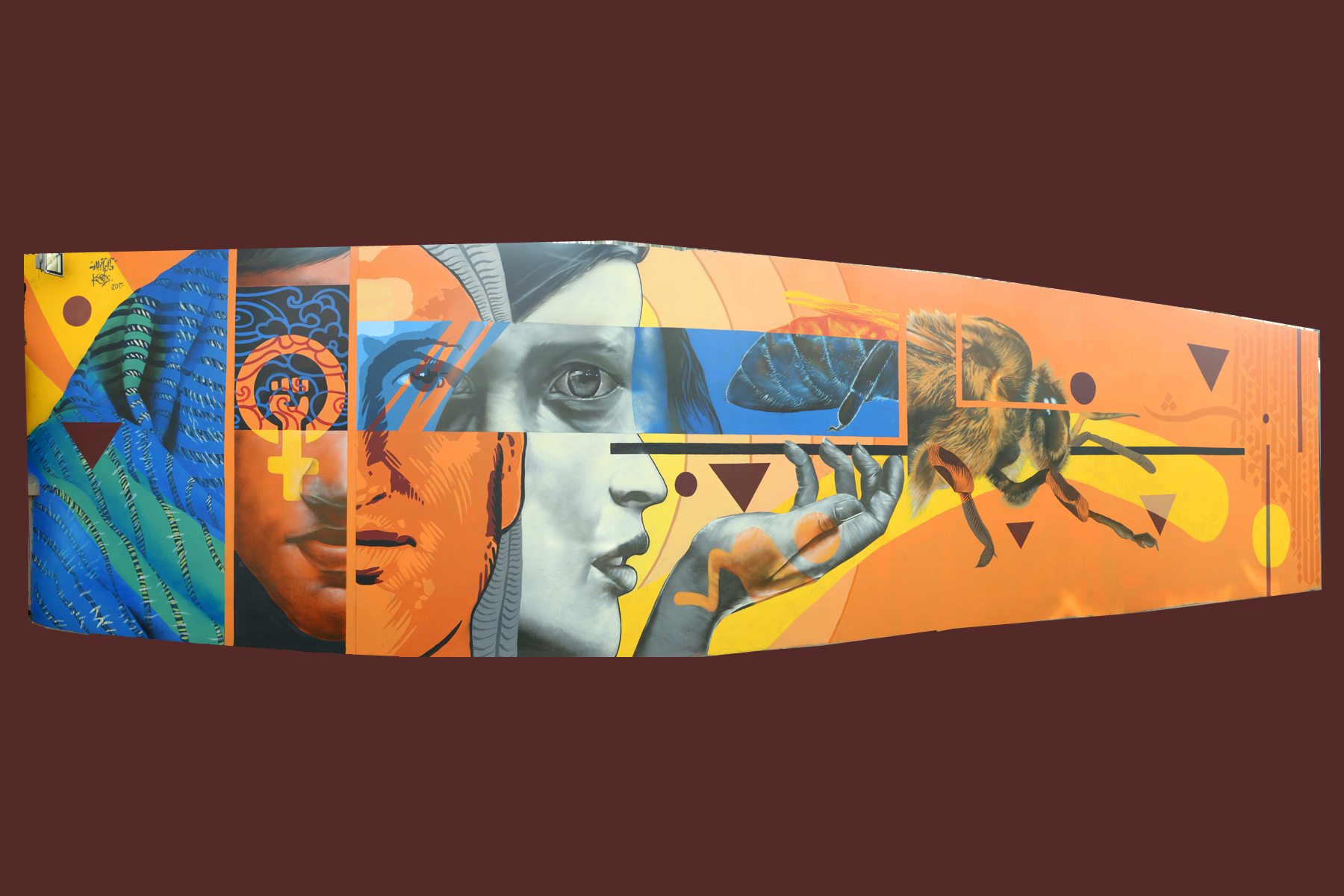
By 2017, Kiran’s name had become well known in the field. He started working with a new group called Core Art Collective. Kiran says that the work he is doing now at the Kathmandu Art House inside the Kathmandu Guest House is very different from the work he used to do. He prefers to take this work as his developed work.
Under the Prasad Project done by Art Lab, sometimes satirical and sometimes social message pictures were painted on the walls of Ratnapark in Kathmandu. However, soon after those pictures were drawn, they were erased and filled with political slogans. Then the question is why those pictures were deleted. Either the society did not like those pictures or the state’s awareness of art was lacking at that time, says another artist Kailash K. Shrestha
“My first works were black and white portraits, calligraphy with red Ranjana script on the face, it became known to me. Its concept was evolution. Intellectual Evolution vs. Biological Evolution. No matter how evolved we humans are, we are still biologically the same humans. But we are evolving intellectually.
Kiran used to work with the same colors keeping in mind that black color shows biological representation and red shows intellectual representation. While working in this way, he started liking the concept of contradiction very much. He started to show old vs. new, intellectual vs. physical artwork. They say that he gets lazy doing the same thing. He always feels that something new should be done.
As a result of that, he was able to express more things through the styles of deconstruction, collage, and images, and the result of that is the mural that is currently being built in the Kathmandu Art House inside the Kathmandu Guest House. He has experience of creative liberty in commission work while working in research and the same in this work.
What are you going to do in this mural now? His answer to the question was – “According to what I heard, there was a place to make dishes towards ‘Jyatha’. I liked that subject.” To represent it, pottery has become an old subject and singing ball is a new one. In his work, he has made the subjects of Pragya Paramita’s letters, Newar community, Sherpa community, etc. the subject of his work.
He has transcribed some letters of Prajnaparamita in Ranjana script and decorated them on the wall. What the creator creates is more relevant than what the observer perceives the creation. The maker has created with a poison, but the viewer connects the art with his own life or personal experience.That is the beauty of it. Such topics are not limited to the gallery. These are within the reach of everyone on the streets, in public places. In this way, art that is accessible to everyone is always strong and powerful.
Such arts help to bring Nepali art to the world market. More and more foreign tourists come to visit Nepal every year. When they see such beautiful murals on the walls of every building and compound, surely the promotion of Nepali artists and the promotion of Nepal will reach the world art market. By which many artists like Kiran Maharjan will be helped to bring their art and their identity to the world market as well as the name of the corporate houses and the art made there will get fame. Even if people cannot say what kind of art was made, people will start gossiping that the art made there is like this, it is trying to show like this by taking the name of corporate building. When the subject of people’s tea gossip becomes art, then there will be no restriction on the development of this field.
In the year 2022, the interior painting of the wall of the Department of Transport in Baneshwar, Kathmandu was named the wall of unity. Which art was made under a project. In which there was the cooperation of the American Embassy and the cooperation of the Kathmandu Metropolitan City. In which American graffiti artists Man Wan, Sudip Ball, Manisha Shaha, Kiran Maharjan, Khem Bahadur Palpali, Chiring Phunchok Gurung and Vishal Manandhar worked.
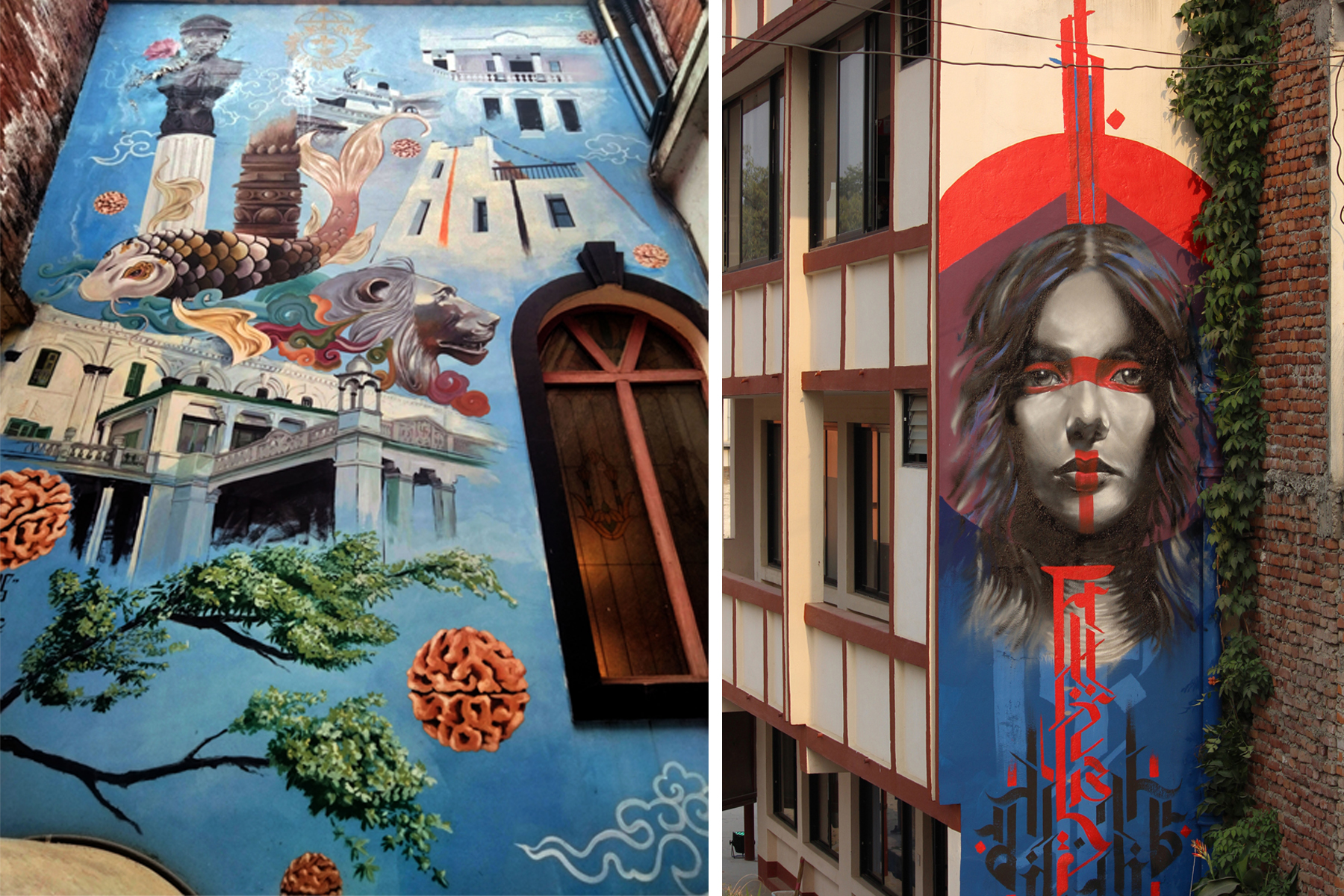
Kailas K. has been working on murals since 2010. Curated by Shrestha and organized by Artstudio, the murals were completed in Kathmandu and Janakpur. In the works of artists representing different geographical areas, things like their geography, culture, and script have been given a place. On the basis of dress, language, gender, the theme of caste of Nepal is included. Which can be considered as another example of the mural named as the wall of unity in terms of inclusion and equality.
Wall painting (mural) is an important means of expression, but there are often controversies about it, but such art has been a symbol of freedom, hope, unity and historical aspects. The social, political and cultural revolutions brought by murals on the world map are considered important. At that time, murals were the most powerful means of expression and the most effective. Murals are one of the most important features of Northern Ireland. The mural depicts the past and present political and religious divisions of the region. The political and religious divisions that have occurred there since the 1970s or occurred in the past were depicted. Where there were almost 2000 murals dedicated to the fight against racism and environmentalism. In this context, another famous place accused of political murals was the Berlin Wall. Where the western side was built in 1961 and after about 28 years in 1989, the upper part was destroyed. In which the works of the famous painter Keith Haring and Thierry Noir became ruins and merged into the womb of the earth.
Looking at the history of Nepali murals, various religious and cultural values were used to be painted on the walls based on popular opinion. But in modern society, not only religious and cultural aspects, but using contemporary themes and events of different periods as images, mural painting is moving forward. In this perspective, artists are using digital technologies in murals. In the beginning, after all the work is done through computer, the practice of making it on the wall is increasing.
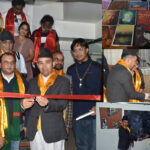
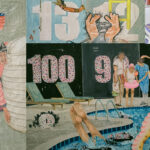

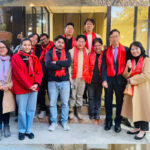
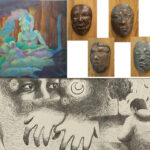
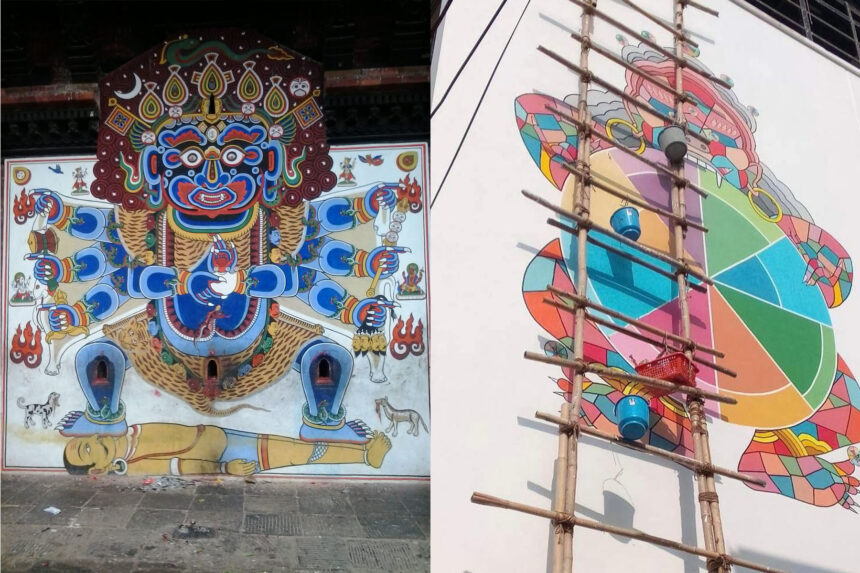

Leave A Comment